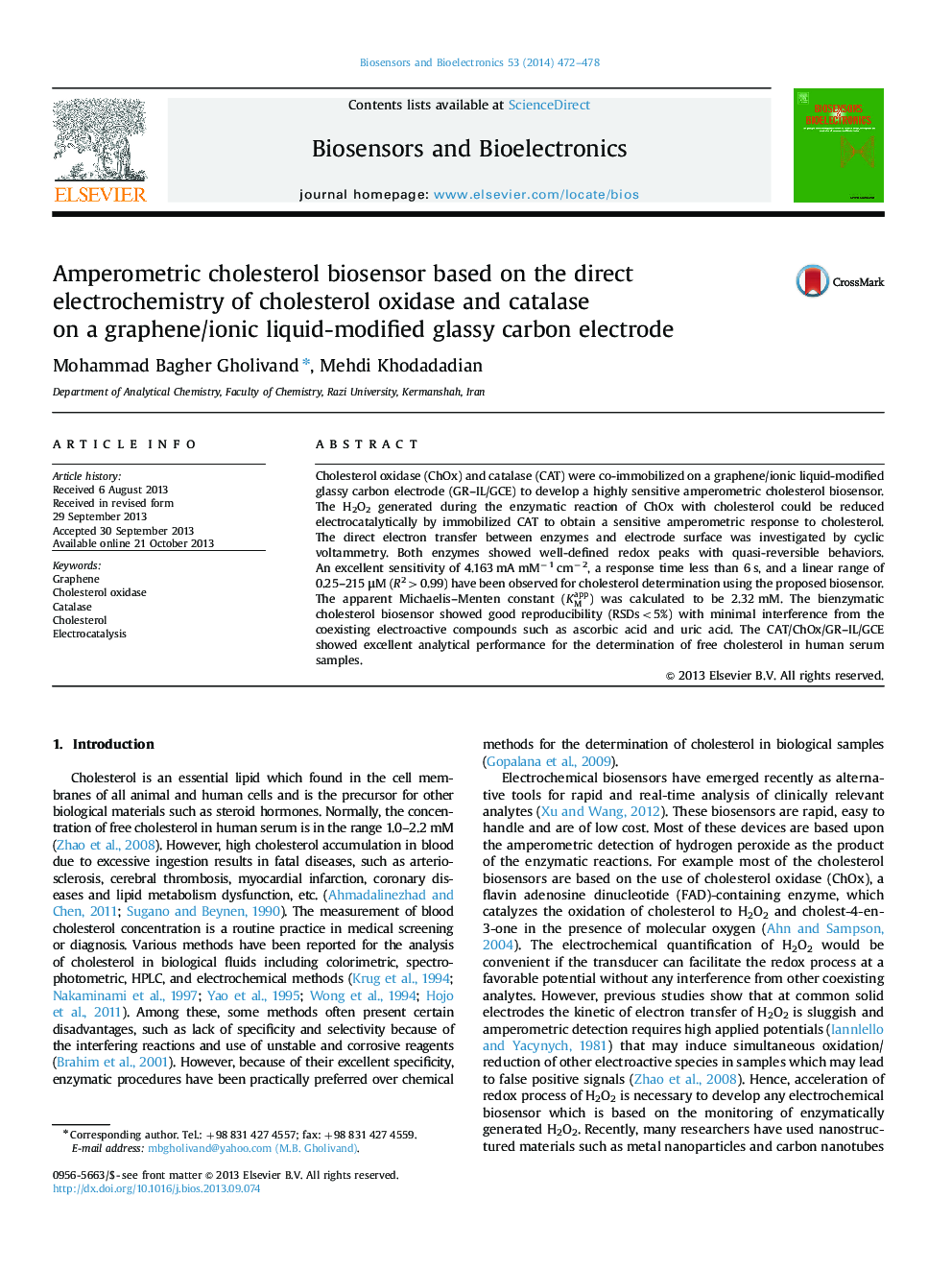| Article ID | Journal | Published Year | Pages | File Type |
|---|---|---|---|---|
| 866727 | Biosensors and Bioelectronics | 2014 | 7 Pages |
•A graphene/ionic liquid-modified glassy carbon electrode was prepared.•Cholesterol oxidase and catalase were co-immobilized on the electrode surface.•Both enzymes showed improved electrochemical behaviors at the modified electrode.•Highly sensitive amperometric response for cholesterol was achieved.•The biosensor could be used within neutral pH values.
Cholesterol oxidase (ChOx) and catalase (CAT) were co-immobilized on a graphene/ionic liquid-modified glassy carbon electrode (GR–IL/GCE) to develop a highly sensitive amperometric cholesterol biosensor. The H2O2 generated during the enzymatic reaction of ChOx with cholesterol could be reduced electrocatalytically by immobilized CAT to obtain a sensitive amperometric response to cholesterol. The direct electron transfer between enzymes and electrode surface was investigated by cyclic voltammetry. Both enzymes showed well-defined redox peaks with quasi-reversible behaviors. An excellent sensitivity of 4.163 mA mM−1 cm−2, a response time less than 6 s, and a linear range of 0.25–215 μM (R2>0.99) have been observed for cholesterol determination using the proposed biosensor. The apparent Michaelis–Menten constant (KMapp) was calculated to be 2.32 mM. The bienzymatic cholesterol biosensor showed good reproducibility (RSDs<5%) with minimal interference from the coexisting electroactive compounds such as ascorbic acid and uric acid. The CAT/ChOx/GR–IL/GCE showed excellent analytical performance for the determination of free cholesterol in human serum samples.
